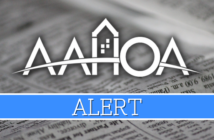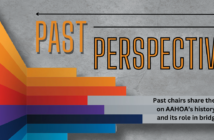Taking a closer look at the economic impact of AAHOA
That AAHOA Members make up a large part of the hospitality industry is an indisputable fact. An association with nearly 20,000 members is bound to represent a large portion of the market, but the exact scope of that impact isn’t one that’s easily defined through anecdotal evidence or membership statistics. With the goal of better quantifying members’ reach in the market, AAHOA commissioned Oxford Economics, a well-respected research firm based in the UK, to conduct a comprehensive economic impact analysis. As part of this research, the firm analyzed a sample set of U.S. hotels, as well as industry-specific economic statistics. The resulting analysis reflects the full scope of AAHOA’s U.S. economic impact in 2019.
Much like a time capsule that’s buried out of sight, once the report was commissioned, there was little for AAHOA to do but wait for the results. But, once the time capsule was unearthed and those results became available, it was immediately clear that AAHOA’s reach is far beyond what was originally assumed. What follows are just a few highlights of the report, which was officially unveiled at AAHOACON21.
To dig in deeper, be sure to access the full report on the AAHOA homepage at AAHOA.com.
As part of this analysis, Oxford analyzed:
- Share of U.S. hotels and rooms owned by AAHOA Members based on a large sample of properties
- Hotel operations based on information on the size and characteristics of AAHOA hotels as well as industry-specific statistics
- Hotel guest ancillary spending based on consumer survey data by state
- Capital investment based on data on new hotel construction and renovations
- Indirect and induced impacts supported by AAHOA hotels in other parts of the U.S. economy based on an economic impact model
Lastly, the researchers defined an “AAHOA hotel” as “hotels at which an AAHOA Member has an ownership interest, or in the case of hotels under corporate ownership, a senior executive role that employs staff in all 50 states, paying billions in wages, salaries, and taxes.” Once the research had been collected, Oxford reported that “AAHOA hotels in the U.S. account for 60% of all hotels, and guests at AAHOA hotels bring billions of dollars of spending to local economies.”
Let’s dig in!
Spending habits and economic impact
- For each $1 of spending on lodging (room revenue plus taxes on lodging, AAHOA guests spend another $1.63 during their trip
- AAHOA hotel guests spend $275.4 billion annually Hotel guest ancillary spending totaled $136.5 billion Of their total travel spend, guests spend 38% on lodging during their stay, and a combined 62% on transportation, food and beverage, recreation, and retail and other expenses
- The highest AAHOA member share occurs in Arkansas, where 9 in 10 hotels are AAHOA hotels
- The 4,974 AAHOA hotels in Texas account for 14.5% of AAHOA hotels overall
Economic investment
- Direct taxes supported by AAHOA hotel operations (i.e., on site hotel revenue excluding hotel guest ancillary spending, and corporate offices) totaled $29.7 billion
- A representative AAHOA property with 100 occupied rooms supports 204 total jobs, including 108 direct jobs and 80 indirect and induced jobs
- Direct capital investment through new construction and renovation efforts) totalled $24.2 billion which supported 165,000 jobs
Additional facts for 2019:
- Hotel sales of $138.9 billion (revenue, plus certain taxes)
- AAHOA hotels support $214.6 billion of wages, salaries, and other compensation, including $47.5 billion at hotel operations.
- AAHOA hotels support $96.8 billion in federal, state, and local taxes. This is equivalent to $789 per U.S. household annually.
- Guests staying at AAHOA hotels spent $275.4 billion at hotels and local businesses, and on transportation.
- AAHOA hotels purchased $50 billion in inputs from other businesses.

Oxford Economics was founded in 1981 as a commercial venture with Oxford University’s business college to provide economic forecasting and modelling to UK companies and financial institutions expanding abroad. Since then, the firm has become one of the world’s foremost independent global advisory firms, providing reports, forecasts, and analytical tools on 200 countries, 100 industrial sectors, and more than 3,000 cities.



